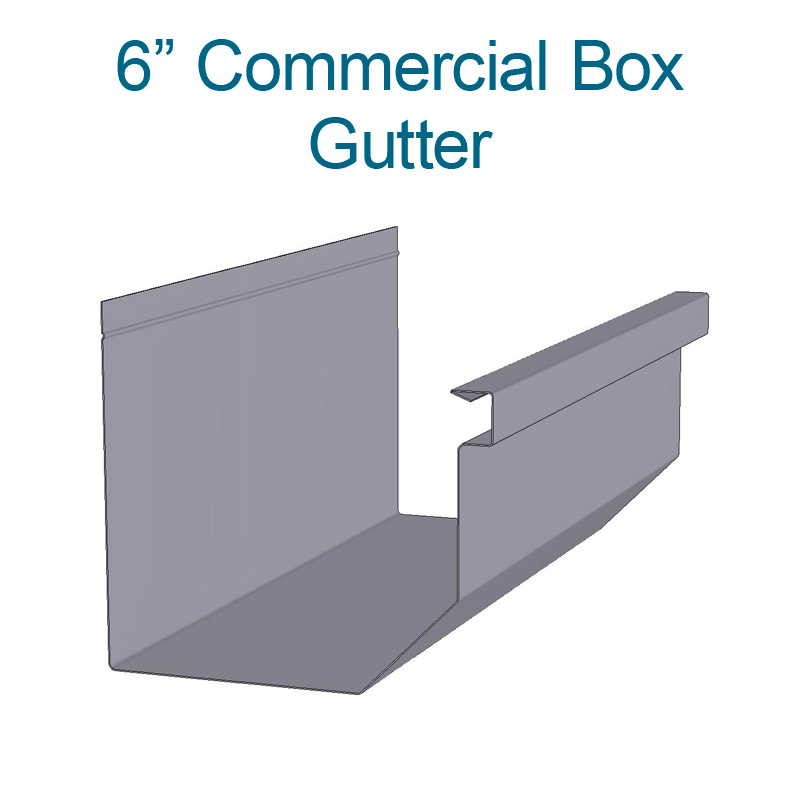Industrial commercial 7" gutters on metal storage buildings
 Saturday, June 20, 2015 at 5:12PM
Saturday, June 20, 2015 at 5:12PM Industrial or commercial gutters on metal storage buildings tend to be undersized, but as you could see on this properly sized and installed project in Seymour, CT it is not the case. This is a heated metal building with storage units and in the winter gets large ice dams and icicles.
Some history on this project is that the building owner over the past decades has replaced damaged gutters numerous times but unfortunately it was always the residential grade materials 5" K-Style or 6" K-Style gutters. The original gutters that come with the metal buildings are never pitched, made out of small sections that leak at the seams and are out of galvanized steel that rusts out at every cut and scratch into gapping holes and use the same strength materials as the residential gutters.
Due to the fact that this building has a pitched metal roof we were concerned about water overshooting the gutters just as much as we were concerned about roof ice dams or snow/ice sheets coming down the roof and damaging the gutters as what has happend with all the previous gutters. As can be seen in the following video, water tends to shoot out over 6" past the metal roof edge in heavier rains so the gutter must be wider than 6". https://www.youtube.com/watch?v=Zgv-gGh4l_U
Since this roof doesn't have any snow stops nor snow rails the gutter would have to be below the roof angle so as to avoid damage from snow or ice sheets coming down that roof. Most property owners that have metal roofs prefer that the snow/ice comes off rather than trapping it on the roof with snow stops or snow rails. As the snow/ice that is trapped on the roof tends to melt due to the heat loss from the building then freeze at the bottom edge where the gutters are and cause enormous ice dams and or icicles.
They chose to go with the 0.040 guage 7" box industrial seamless gutter with fascia hangers and roof hangers staggered every 12 inches. The hangers for these gutters are 1/8" thick aluminum by 2 inches wide secured with 3" self piercing stainless steel fasteners with neoprene washers. Since the 16 guage steel eave strut, that is on the interior corner of the roof and siding, is 1.5" past the back wall of gutter due to the corrugated metal siding and insulation roof hangers had to be at least 10" long so as to reach the eave strut through the roof. Otherwise, the gutter wouldn't be as secure if it was only to be attached to the corrugated metal siding panel and or corrugated metal roof panels. With all the ice that builds up on the edge of the roof of this property must be sure the gutters are secured into structural substrate and could handle it.
For waterproofing, generously dabbed professional grade stretchy gutter sealer in the area where the fasteners would be penetrating the roof. Prior to the sealer curing, place the roof hanger on the flat surface of the metal roof panel. Screwed in the self piercing stainless steel fastener with neoprene washer through the 1/8" thick hanger, through the 20 gauge roof panel and through the 16 gauge eave strut. As a precaution, seal around the hanger and around the fastners.
Rolled out the sierra tan color 0.040 guage aluminum 7" commercial box gutter on site so that it is seamless. The sierra tan color matches the faded wicker color metal siding the closest.
This metal roof is 150 feet long by 20 feet wide with 4 underground 6 inch drains. Comes to only 750 square feet per 4x5 downspout that can handle up to 2,000 square feet of roof. Therefore, the 4x5 downspouts were sufficient and did not need to be replaced.


